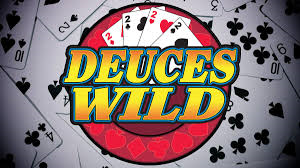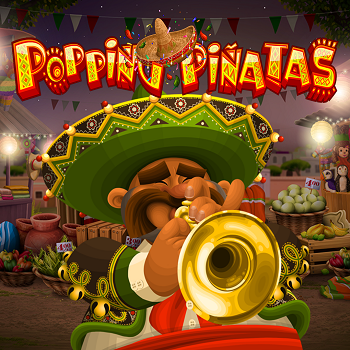Deuces Wild Multi-Hand Review & Expert Guide

Advanced Strategy To Play Deuces Wild Multi-Hand
Deuces Wild is one of the most difficult video poker games available. It’s difficult enough to master fundamental strategies for this tremendously complex game, but we’ve made advanced strategy more approachable by using real-world examples. In general, video poker games featuring wild cards are more difficult to play than those without them.
This is a straightforward arithmetic problem: There are many more circumstances to understand in wild card games, but that isn’t the complete tale. On a conceptual level, learning tactics for wild card games is more challenging because they are more abstract due to the existence of wild cards. Playing with two or three (or even four) wild cards is actually quite simple, and you could learn how to master those circumstances in only a few minutes and never make another mistake there again for the rest of your life.
When it comes to Deuces Wild strategies with one or zero wilds, though, things get a lot more complicated, and those are the types of games we’ll be looking at here.
Play Deuces Wild Multi-Hand Video Poker for Fun
Understanding The Pay Tables in Deuces Wild
Deuces Wild has a wider range of pay tables than almost any other game of online video poker. As a result, we must emphasise the importance of paying attention to the pay tables and ensuring that you are not playing a game that disadvantages you in the first place. If you look online, you can find pay tables that pay 98.5 percent or more, and if you wait long enough, you can find games that pay 99 percent or more.
As a general guideline, never play if the maximum payout rate is less than 98.5 percent. The greater the number, the better, although this is the lowest limit of the allowable range.
Aside from that, the pay tables are designed in essentially the same way. Except in a few unusual circumstances that are specialist games that are outside the purview of what we’re looking at here, the hands are always in the same order, and they’re always paid according to the same relative scale, more or less.
With that in mind, here’s a quick peek at the top of the pay table’s order of hands:
- Natural Royal Flush
- Four Deuces
- Wild Royal Flush
- Five of a Kind
- Straight Flush
The rest of the hands follow in the typical order from there, however we’d like to point out that the variances are due to the wilds. There are no deuces in a Natural Royal Flush, and it pays out far more than the wild variant. Four deuces is a particular variation of five of a kind that pays significantly more than the standard variant.
With that out of the way, we’ll move on to some advanced Deuces Wild video poker techniques and some example hands that fall into two categories: having one wild and having none.
Play Deuces Wild Multi-Hand Video Poker for Fun
Strategy For Having No Wild Cards in Deuces Wild
We’ll start with the most basic scenarios and what to expect, which will be areas that don’t have any wilds.
You can run into two circumstances that will cause you problems:
- You’re out of alternatives and can’t figure out what to do with your remaining cards.
- You’re torn between two (or three) good options and can’t decide which is the best.
We’ll teach you how to play the circumstances that follow these two very difficult cases, as well as what you can do about them if you don’t have any wilds in your hand, in the sample hands below.
Example 1
Most players will realise that they have two options in this situation: keep the pair or keep the four-card flush draw. The average payments for these two alternatives are as follows:
- Flush Draw (AQJ5) – 0.511x
- Pair of Fives – 0.560x
We can learn our first important lesson from this: A single pair is worth more than a flush draw when there are no wild cards (or a straight draw).This is especially crucial to remember because pairings in this game aren’t worth much because you need at least three of a kind to win, which implies no wins if you have a low pair like 55.
However, unless you’re familiar with it, there’s a second lesson in this hand in a third technique to play that most players miss almost all of the time:
- Three to a Royal (AQJ) – 1.272x
That’s more than double the value of the next-best method to play, which is a pair of fives. Consider the following for advanced Deuces Wild strategy: Three to a royal is better than a pair or a four-card draw that isn’t four to a straight flush if you don’t have any wild cards in your hand. This example hand is useful since it demonstrates how to play a large number of hands in a short amount of time.
Example 2
Because of the implications of having so many wild cards in the deck, this is the type of hand that many players become perplexed by and often play poorly.
From the start, it’s evident that there are two options: three to a straight flush or four to an open-ended straight draw.
The following are the typical payouts:
- Open-ended Straight Draw (JT98) – 0.511x
- Three-card Straight-flush Draw 0.498x
You’ll see that the two ways to play are pretty similar in terms of value. What’s fascinating is that they’re both completely acceptable ways to play this hand, so it wouldn’t matter which one you choose if you were only playing on a basic level. Advanced players, on the other hand, should be aware that three to a straight flush is slightly worse than four to an open-ended straight flush. We may proceed to our third and final example hand for hands with no wild cards from here.
Example 3
This is a wonderful example of not having what appears to be a good way to play and having to figure things out the best you can with the few resources you have. It is, however, a good illustration of what is, in fact, the core concept of advanced strategy for hands without wilds:
You’ll need to know when it’s best to abandon a hand entirely and draw five, and you’ll need to know which hands are better than drawing five in order to do so. The fundamental concept here is that in Deuces Wild, retaining a single high card, or even two high cards, isn’t a good strategy. Because, unlike games like Jacks or Better, you can’t be rewarded for a single pair, holding single non-wild cards is a waste of money.
With that out of the way, let’s have a look at the three different approaches to play this hand:
- Two to a Royal (QJ) – 0.342x
- Four to an Inside Straight (QJ98 or J987) – 0.340x
- Discard Five – 0.320x
It’s worth noting that in this scenario, QJ-suited is preferable to drawing five, as is four to an inside straight. It’s worth mentioning that AT-suited by itself is a lesser value than drawing five, so two to a royal isn’t particularly advantageous. The true problem is having two consecutive KQ/QJ/JT cards, which are the only two-card combinations better than discarding five and hoping for the best. Similarly, throwing any four to an inside straight draw is slightly better than throwing five.
Play Deuces Wild Multi-Hand Video Poker for Fun
Strategies For Having One Wild Card in Deuces Wild
With one deuce in your hand, things get a lot more intriguing since the hand rankings become more abstract and draw-oriented. Everything about these hands is based on how you play three different sorts of straight flush draws, and all other hands are ranked based on how well you play those three.
Before we get started, let’s define the three different sorts of straight flush draws that are important to our rankings:
- A major straight-flush draw – A deuce with three other consecutive cards that are 5/6/7 and up
- A minor straight-flush draw – Every other type of straight flush draw with four cards (including a deuce)
- A three-card straight-flush draw – A deuce with two additional consecutive cards 6/7 and up
For the sake of these advanced techniques, any other three-card straight-flush draws will be ignored and treated as garbage. Let’s look at some examples now that that’s out of the way.
Example 1
This first sample hand is rather simple. You have two options for how to play your hand, however most players would go for the flush without discarding any cards. Take a look at the numbers:
- Major Straight-flush Draw – 2.213x
- Flush – 2x
What you’ll see is that, while the flush is a safe play, the massive straight-flush draw is considerably better, scoring more than 10% higher. This brings us to a crucial rule: Major straight-flush draws are valued more than made flushes or straights with one wild. From there, we can look at our following example to have a solid understanding of how to play Deuces Wild’s most challenging hands with a single wild.
Example 2
Only one card has been changed in this hand, yet it has made a significant difference. Because the 9/8/6 cluster does not have consecutive ranks, it becomes a minor straight-flush draw, allowing you to play the hand in one of two ways:
- Flush – 2x
- Minor Straight-flush Draw – 1.936x
As can be seen, major straight-flush drawings are better than made straights and flushes, but minor straight-flush draws are lower. You’ll also notice that the margins we’re dealing with aren’t huge, but they’re significant. The difference between a flush and a minor straight-flush draw is roughly 6.4 percent of your bet size, which may not seem like much at first, but it adds up quickly if you make the same error over and over.
Deuces Advanced Learning how to play scenarios with small margins is a common theme in wild methods, and that’s exactly what you’ll find here.
Example 3
When you have a wild card, one of the most important lessons to understand is that you won’t be drawing to regular straights or flushes very often. In a serious approach, this hand demonstrates how this works.
Players who are familiar with fundamental strategy will believe that three to a royal is better than four to a flush in this situation, and they are correct, but there’s more to it than that.
The three main ways to play this hand on any level are as follows:
- Three to a Royal (QJ2) – 1.219x
- Deuce – 1.035x
- Flush Draw (QJ72) – 0.702x
Consider the fact that holding the 742 combination, which makes no sense on any level, actually scores higher with a 0.709x average win, demonstrating how useless a conventional flush draw is in this case. We have one more sample hand remaining to show you another option that is better than drawing to a deuce in some hands.
Example 4
This is the kind of hand that new and intermediate players make all the time, and it’s a great example of how mastering advanced Deuces Wild strategy may improve your payout rate over time.
- Beginners will frequently preserve the K-2 combination for a pair of kings since they are unaware that keeping the 2 alone is truly preferable.
- Intermediate players may frequently wish to maintain 9-2-7-6 for an open-ended straight draw, despite the fact that they are of poor value in this game.
- Advanced players will see that there is a third alternative, the three-card straight flush draw, that is very simple to overlook.
With that in mind, here are some values to keep in mind in situations where you don’t seem to have much to go on except your one wild card:
- Three-card Straight-flush Draw (762) – 1.088x
- Deuce – 1.033x
- Pair of Kings – 0.869x
- Open-ended Straight Draw (92760 – 0.830x
As you can see, a three-card straight-flush draw is poorer than the three-card royal we saw previously, but they are both better than a single deuce. Single pairs and flush or straight draws, on the other hand, are worse than retaining the deuce alone.
Scope Of Making Money
The top payoff on a Deuces Wild video poker machine is 800 coins for a single coin stake and 4,000 coins for a five-coin wager if you hit a royal flush. Some local casinos and poker rooms may also offer players the chance to win a progressive jackpot worth thousands of dollars.
Play Deuces Wild Multi-Hand Video Poker for Fun
The Bottomline
By any stretch of the imagination, the advanced layers of strategy for Deuces Wild video poker are not simple. Even though there is some complexity, reviewing the seven hands we have shown here will provide you with all of the information you need to play nearly flawlessly. There are a few outliers that will contradict these principles once every few thousand hands, but even then, the amount of value lost is on the order of thousandths of the magnitude of your gamble, so they’re not worth worrying about.

